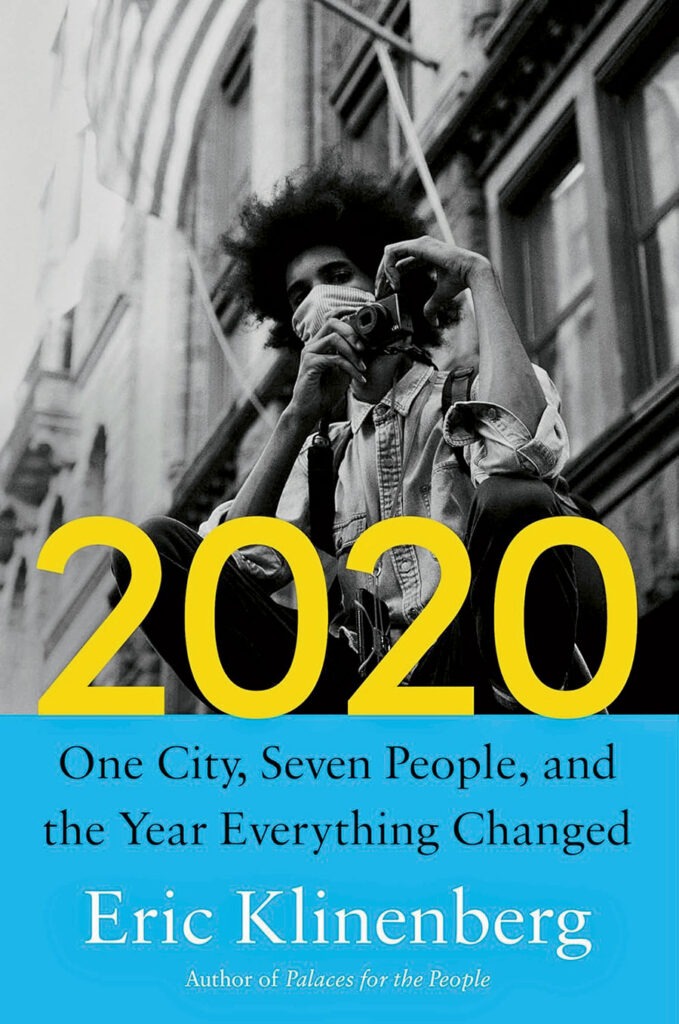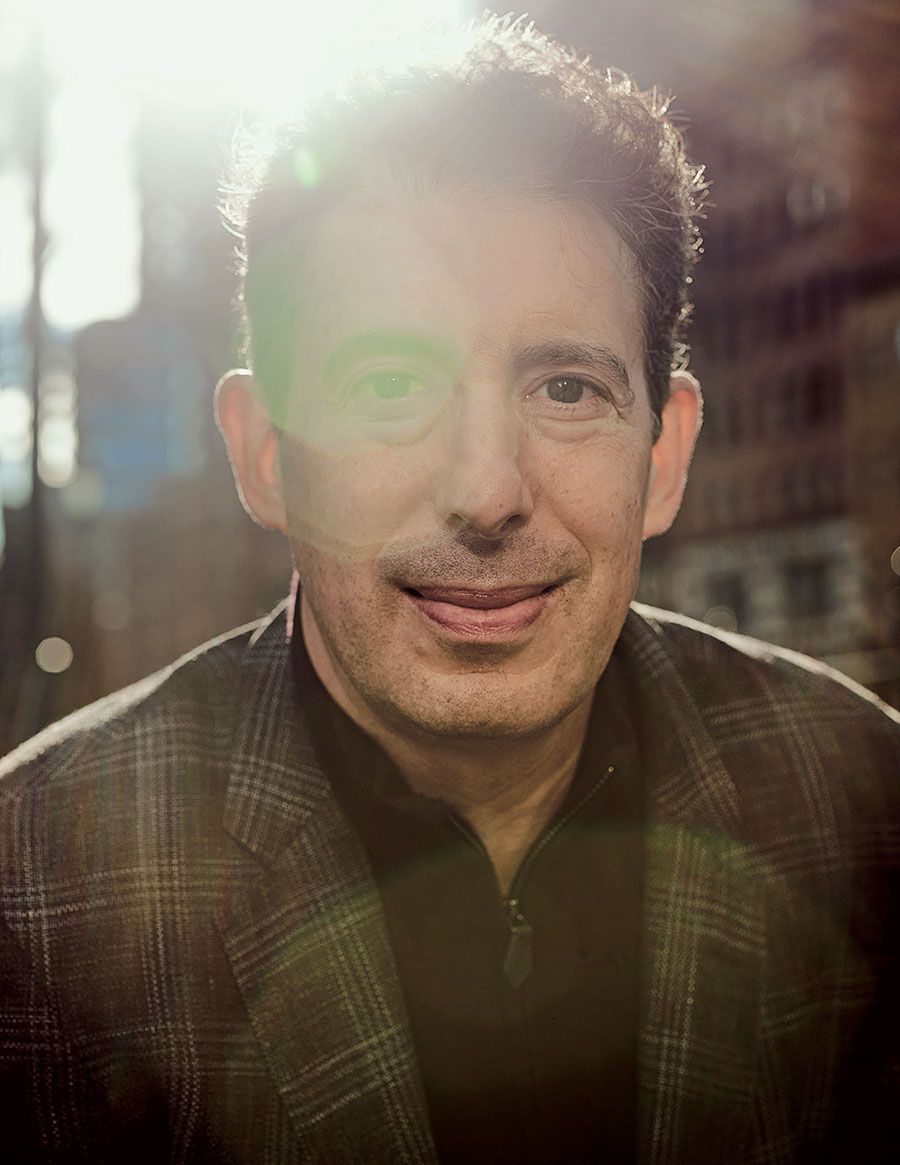Eric Klinenberg, who grew up in Chicago, wrote the definitive account of one of this city’s biggest tragedies. His 2002 book Heat Wave: A Social Autopsy of Disaster in Chicago analyzed the events that led to 739 deaths during five days of scorching temperatures in July 1995. Since then, Klinenberg has continued to study and write about the ways crises reveal the hidden fault lines in society. A sociology professor at New York University since 2002, he saw New York City become the deadliest place in America during the COVID pandemic. That city’s experience is the subject of his new book, 2020: One City, Seven People, and the Year Everything Changed.
2020 is both a social autopsy of the institutions that broke down during the pandemic and the story of seven people who lived through it. Why combine these two approaches?
One of my heroes is C. Wright Mills, a midcentury sociologist. He argues that no sociological research project is complete unless you can connect it with the big picture, social story, and historical forces that worked on our individual lives and stories. In other words, the best sociology puts our personal experiences into a broader context because so many of the things that we experienced as personal problems are, in fact, shared problems that come from our culture. So, in all my work I’ve tried to go back and forth between the personal and the social — or some would say the structural. I’ve never done anything quite as intimate, though, as 2020.
“Societies reveal themselves when they’re under threat. You can see who we are and what we value, whose lives matter and whose don’t.”
Why focus exclusively on New York?
I’ve lived in New York City for 20 years. Shortly after the pandemic began, I published an article in the New York Times in which I argued that social distance was the wrong strategy for surviving the pandemic, that we needed physical distance but social solidarity. It was clear to me that this fact was going to allow some societies to get through the crisis while others fell apart. My initial idea was that I’d travel around the world and see what was happening in all these different societies. Well, of course, the pandemic lasted years, not weeks, so I never was able to go out and travel around the world. But I was in New York, and New York contains a world of different experiences.
How did growing up in Chicago shape your interests as a sociologist?
My family’s been in Chicago for about a hundred years. I grew up in Old Town when people were worried about it gentrifying. I lived a few blocks from Cabrini-Green at a time when Cabrini-Green was very tough. I went to Francis Parker for 14 years, but I felt decidedly less privileged than everybody else. So I had this very weird experience of growing up in all these different Chicago contexts and being puzzled by the city. I was trying to understand what it means to live in a divided city where people know about the inequality but also have this very powerful will not to know about it. I felt the heat wave was a great opportunity to learn about Chicago because it made visible all these things that we put out of sight, like the fact that there are so many very poor people in Chicago and so many people who are isolated and alone and vulnerable, and that our neighborhood inequalities really matter — they determine who lives and who dies. And that the city government at the time just didn’t care and was willing to let it happen. I thought that once people saw all this, they’d be forced to reckon with it. Unfortunately, they continue to ignore it.
What do you think we as a society most need to talk about now in terms of the pandemic?
Societies reveal themselves when they’re under threat. You can see who we are and what we value, whose lives matter and whose don’t. One of the fascinating things that happened in the beginning is that we shut down our economy and our schools because the threat of being outside was too severe, but we couldn’t shut down the economy altogether, so we came up with this unusual category: the essential worker. The overwhelming majority of people who discovered that they were actually the most valuable people in our economy and society were low-wage workers. They were disproportionately Black and Latino. And when we called them essential workers, effectively what we were doing was making them disposable, telling them, “The rest of us are gonna go get safe, and you — you stay out there.” We did it without asking them if they wanted to do it, and we did it without providing them with the protection that they needed to do their work. We didn’t have masks and PPE, we didn’t have tests. But it felt at the moment like there was a little bit of a moral deal that we were making, that implicit in that should be an acknowledgment that we’ve undervalued their contributions to society, that going forward they should be compensated and protected and taken care of once the crisis was over. It seemed as though we walked to the precipice of a moral breakthrough, and then looked at what we were doing and raced back.
Amidst the darkness of that time were there any positive takeaways?
Absolutely. We need to remember what we did with mutual aid networks, for example. In the book, I profile a woman who was a retired Manhattan DA who lives in Jackson Heights, Queens, which might be the most diverse neighborhood on the planet. She started this small network to help her neighbors get through the first days of the crisis, and it turned into this incredible mutual aid network that grew and grew and began providing all kinds of services to people. Her story is inspiring, and what she built with her neighbors is an organization that’s proven to be durable. So, as important as it is for us to remember the way we turned our back on low-wage workers, it’s equally important that we honor the better angels of our nature. This is not just a country that’s polarized and divided and spiteful and violent; it’s also a country of people who are capable of doing tremendous things for the common good.

Opening Lines
Klinenberg’s 2020 begins with this quote from a cardiologist and critical care physician in New York City.
“Breathing isn’t just about staying alive. It’s about living. It’s how you inhabit a place. Where you live. Where you work. Where you eat. You take in the air, bring the world in. You exhale, give something back. Breathing is our fundamental chemistry. It’s where all our connections begin. And that, for me, was the thing that made COVID so difficult, so scary. It was like, suddenly, whenever I left home, I was afraid to take a breath.”



